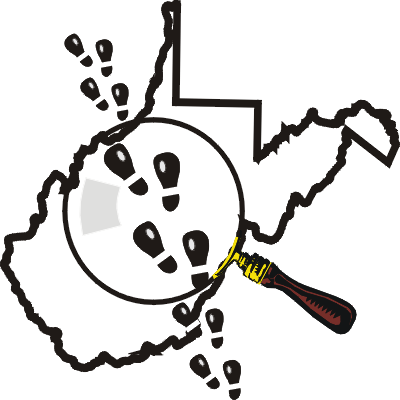West Virginia Department of Health
and Human Resources
Information for Physicians – La Crosse Encephalitis
What are the symptoms of La Crosse infection?
Clinical illness can range in severity from mild
aseptic meningitis to severe disease mimicking herpes encephalitis.
Lethargy, behavioral changes, disorientation, incoordination, focal motor
abnormalities, and/or coma occur with severe disease. Seizures occur in
46% of children hospitalized with La Crosse encephalitis.
Laboratory findings may include peripheral
leukocytosis (average 15,700 WBC/mm3) with a left
shift, and CSF pleocytosis (average 130 / mm3). CSF glucose is
usually normal, and protein is rarely elevated. Serological tests for
arbovirus may be negative early in the course of illness.
How common is La Crosse encephalitis?
West Virginia reports an average of 50 cases per
year of La Crosse encephalitis. Most cases have been reported from the
south central portion of our state; however, the disease is underreported
and underdiagnosed. Most illness occurs in children less than 16 years of
age; however, disease can occur at any age. The peak season for La Crosse
is June through October.
How can I make the diagnosis?
Diagnosis is confirmed only by the presence of
clinical illness and:
a four-fold rise in serum antibody, OR
virus-specific immunoglobulin M (IgM) in CSF by
antibody-capture enzyme immunoassay (EIA), OR
virus-specific IgM in serum by antibody-capture
EIA, and demonstration of virus-specific serum immunoglobulin G (IgG)
antibodies in the same or a later specimen by another serologic assay
(e.g. neutralization or hemagglutination inhibition), OR
isolation of virus or detection of viral antigen
in blood, CSF, or brain tissue.
Confirmed cases should be reported to the local
health department so that an environmental investigation can be performed.
Where can I get laboratory testing for my patients?
Testing of serum or CSF by the antibody capture
enzyme-linked immunosorbent assay is available free of charge through the
Office of Laboratory Services (OLS) at WVDHHR. Call 304-558-3530 to
arrange.
OLS will routinely perform titers for La Crosse,
eastern equine encephalitis, St. Louis encephalitis (SLE) and West Nile (WNV).
Practitioners should insist that their laboratory
perform a quantitative serologic test (by IFA, hemagglutination-inhibition,
neutralization assay, or EIA), and that serum is also screened for eastern
equine encephalitis, St. Louis encephalitis, and West Nile virus.
What is the prognosis for patients infected with La
Crosse encephalitis?
Mortality is less than 1%. In most cases, neurologic
and behavioral sequelae resolve within a few months; however, there are
significant long-term neurologic, cognitive, and behavioral deficits in
some children.
What other diagnoses should be considered?
While a full listing is not possible here, the major
differential considerations include:
Herpes Simplex encephalitis (HSE),
enterovirus infection, and
partially treated meningitis.
HSE should be considered in children presenting with
focal neurologic or EEG findings because early therapy with acyclovir
improves prognosis.
What therapy is recommended for La Crosse
encephalitis?
In mild cases, treatment is supportive. Children
with focal findings should be considered for treatment with acyclovir for
presumed Herpes Simplex encephalitis (HSE) until the diagnosis is ruled
out. Practitioners caring for a child who has seizures, hyponatremia, or
disorientation should strongly consider transfer to a Pediatric Intensive
Care Unit (PICU) for close monitoring. Whether on the pediatric floor or
in PICU, the child’s mental status should be monitored using Glascow
Coma Scale. Children with seizures, hyponatremia, or deterioration in
mental status should be managed in consultation with an expert. Even
children with very severe disease can improve markedly with aggressive
management.
Ribavirin is being used experimentally in the
treatment of La Crosse encephalitis, but no data is yet available on
efficacy.
Confirmed cases should be reported to the local
health department. Your local health department will do an environmental
investigation and educate the parents about preventing the disease.
For more information:
Mc Junkin, J. E., et.al., ‘California
La Crosse encephalitis’ Infect Dis Clin North Am, 1998; 12:83-93.
Rust, R. S., et.al, ‘La Crosse and
other forms of California encephalitis’ J Child Neurol, 1999; 14:1-14.
Balkhy, H H., and Schreiber, J. R., ‘Severe
La Crosse encephalitis with significant neurologic sequelae’ Pediatr
Infect Dis J, 2000; 19:77-80.
McJunkin, J. E., et.al. ‘Treatment of
severe La Crosse encephalitis with intravenous ribavirin following
diagnosis by brain biopsy.’ Pediatrics, 1997; 99:261-7.
McJunkin, et.al., ‘La Crosse
encephalitis in children,’ N Engl J Med, 2001; 344:801-7.
|

